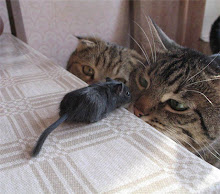Using VERTICALLY AND CROSSWISE you do not need to the multiplication tables beyond 5 X 5.
- Suppose you need 8 x 7
8 is 2 below 10 and 7 is 3 below 10.
Think of it like this:
The answer is 56.
The diagram below shows how you get it.
You subtract crosswise 8-3 or 7 - 2 to get 5,
the first figure of the answer.
And you multiply vertically: 2 x 3 to get 6,
the last figure of the answer.That's all you do:
See how far the numbers are below 10, subtract one
number's deficiency from the other number, and
multiply the deficiencies together. - 7 x 6 = 42
Here there is a carry: the 1 in the 12 goes over to make 3 into 4.
Here's how to use VERTICALLY AND CROSSWISE for multiplying numbers close to 100.
- Suppose you want to multiply 88 by 98.
Not easy,you might think. But with
VERTICALLY AND CROSSWISE you can give
the answer immediately, using the same method
as above.Both 88 and 98 are close to 100.
88 is 12 below 100 and 98 is 2 below 100.You can imagine the sum set out like this:
As before the 86 comes from
subtracting crosswise: 88 - 2 = 86
(or 98 - 12 = 86: you can subtract
either way, you will always get
the same answer).
And the 24 in the answer is
just 12 x 2: you multiply vertically.
So 88 x 98 = 8624
Multiplying numbers just over 100.
- 103 x 104 = 10712
The answer is in two parts: 107 and 12,
107 is just 103 + 4 (or 104 + 3),
and 12 is just 3 x 4. - Similarly 107 x 106 = 11342
107 + 6 = 113 and 7 x 6 =42
